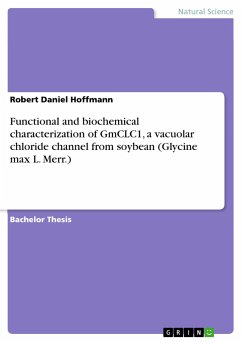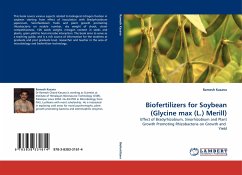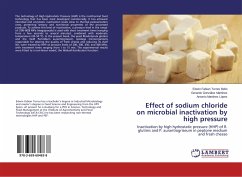Bachelor Thesis from the year 2010 in the subject Biology - Micro- and Molecular Biology, grade: 1,0, University of Hannover (Institut für Botanik), language: English, abstract: In plants, chloride and nitrate transportation across the tonoplast is mediated by members of the chloride channel family (CLC). Seven Arabidopsis CLCs are identified and the function of nearly all is unravelled. In contrast, only one CLC was discovered in soybean (Glycine max L. Merr.) and named GmCLC1. Except that GmCLC1 is located in the tonoplast and trans-ports chloride, little is known about the protein's function and transport mechanism. The purpose of this study was to identify whether GmCLC1 transports anions as a channel, or if it is an anion/proton antiporter, as comparison of its amino acid sequence with other CLCs suggests. For this, transgenic Bright Yellow (BY)-2 cells constitutively expressing GmCLC1 were treated with NaCl at different pH and the cells' viability was analyzed. Moreover, vacu-olar pH was measured using confocal microscopy. The in planta function of GmCLC1 was assessed by complementation studies with Arabidopsis AtCLCa knock-down mutants. For this, Agrobacterium mediated transformation was used to insert GmCLC1 into an Arabidopsis wild type and the mutant lines. In the non-transgenic plants, nitrate and chloride contents were measured by colorimetric methods. Anion measurements of the transgenic plants are pending.Analysis of the test with transgenic BY-2 cells revealed that GmCLC1 functions in a pH de-pendent manner. BY-2 cells' viability was decreased at low pH, indicating a reduced seques-tration of chloride from the cytosol into the vacuole. In planta studies of Arabidopsis mutants showed that chloride substitutes nitrate in AtCLCa knock-down mutants. Thus, besides that proof for AtCLCa's nitrate affinity is given, this result suggests that chloride is transported by another tonoplast located member of the CLC family. The understanding of nitrateand chloride compartmentalization in plant cells is important for the development of salt tolerant cash crops. A trait which is highly needed as the world's cul-tivated land is severely affected by salinity.
Hinweis: Dieser Artikel kann nur an eine deutsche Lieferadresse ausgeliefert werden.
Hinweis: Dieser Artikel kann nur an eine deutsche Lieferadresse ausgeliefert werden.








